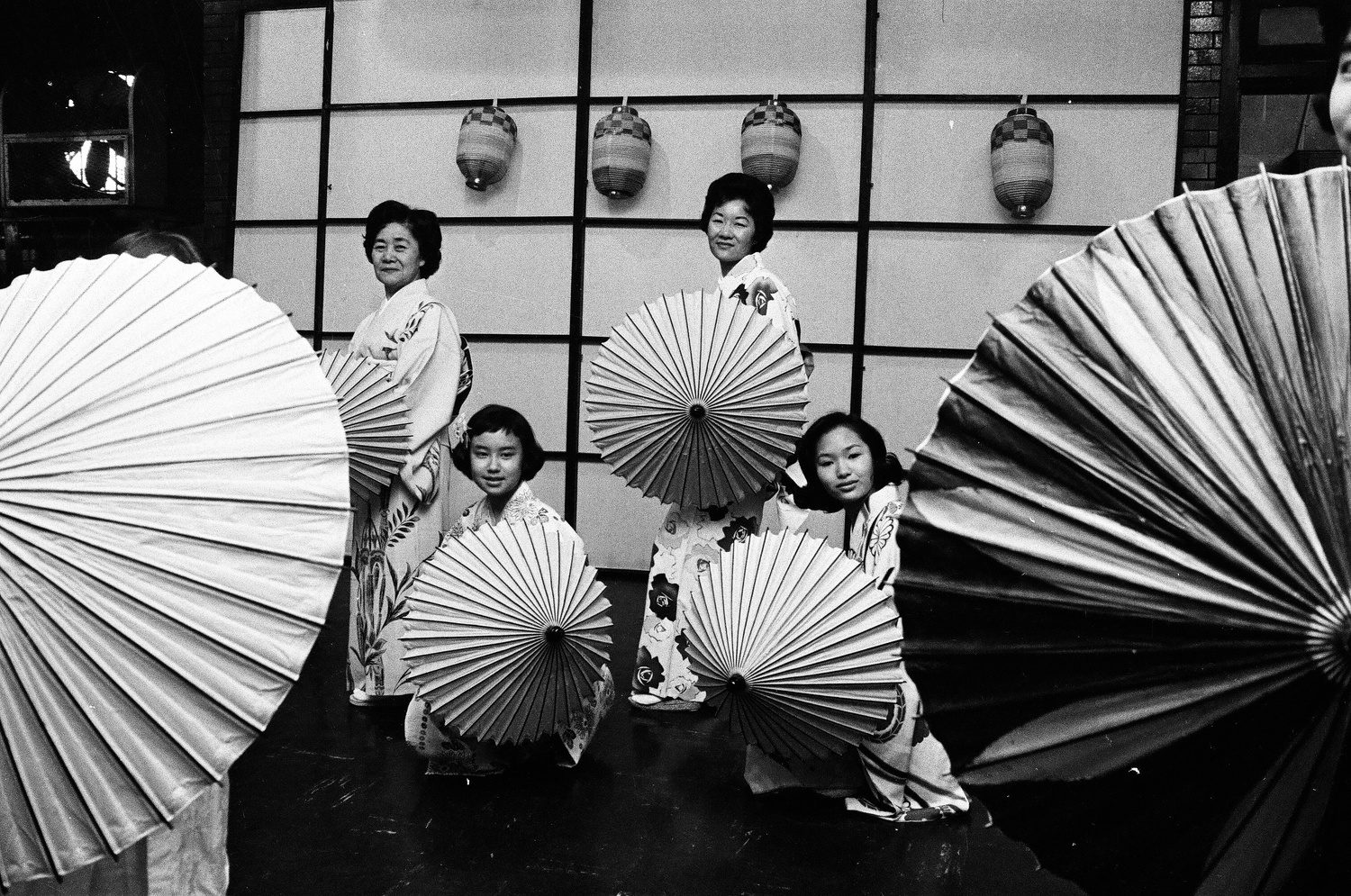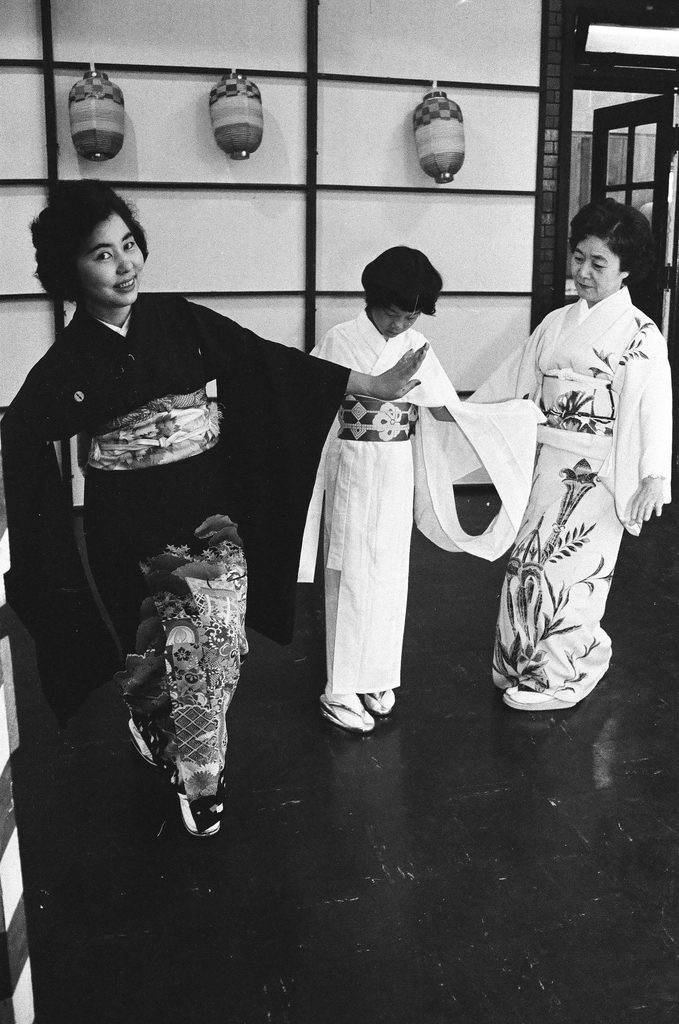
Celebration of Obon, 1963. CHM, ICHi-037492; Albert M. Hayashi, photographer
In 2023, the multiday Japanese holiday of Obon or Bon takes place August 13-16. This festival is a time to honor and remember the spirits of the deceased, including family members and ancestors. Though believed to have origins in the Buddhist All Souls Day, Obon is not exclusively Buddhist and is celebrated by many communities in Japan and beyond throughout the Japanese diaspora.

Women and girls dancing with parasols at the 19th annual Midwest Buddhist Church Obon festival, 1763 North Park Avenue, Chicago, July 5, 1963. ST-40001293-0010, Chicago Sun-Times collection, CHM
Many different activities take place throughout the four days of celebrations to honor and welcome the time of remembrance. Before it begins, many families clean their homes and prepare special meals. The celebration is most readily recognized by its glowing paper lanterns, which are lit to welcome the spirits of those who have passed. The first day of the festival is usually marked by tending to loved ones’ graves and cleaning memorial stones.

Two women and girl at the 19th annual Midwest Buddhist Church Obon festival, Chicago, July 5, 1963. ST-40001293-0002, Chicago Sun-Times collection, CHM
Special dances known simply as Bon Odori (“Bon dance”) are usually performed on the second day of the festival and are a pivotal part of Obon celebrations. On the third day, toro nagashi (“floating lanterns”) are lit by the hundreds or sometimes thousands and released on water as a spiritual guide, with the fourth and last day serving to bid loved ones farewell until the next celebration.


Dancers (left) and a taiko drummer (right) at the 19th annual Midwest Buddhist Church Obon festival, Chicago, July 5, 1963. ST-40001293-0003 (left) , ST-40001293-0004 (right), Chicago Sun-Times collection, CHM
This set of images from CHM’s Chicago Sun-Times photography collection are of an Obon celebration held at the Midwest Buddhist Church (now Midwest Buddhist Temple) in July 1963. According to news reports, three hundred men, women, and children danced that evening. Dancing took place in the streets with lanterns shining above. The festivities also included a costume parade and an Obon worship service “celebrating the oneness of the past, present and future” (Chicago Sun-Times, 1963).
The Midwest Buddhist Temple has roots in Shin Buddhism (known as Jodo Shinshu or “Pure Land” Buddhism). Early American Shin Buddhist communities formed in San Francisco due to Japanese immigration at the turn of the twentieth century, eventually becoming known as the Buddhist Churches of America. In the wake of World War II, thousands of Japanese Americans were forcefully relocated from the US West Coast in the 1940s, and many were imprisoned at “relocation centers” in rural locations around the country. At this time, Buddhism was seen as incongruous with “Americanness,” but communities fought to retain Buddhist beliefs and practices. Once released, community members looked to form new roots, with many coming to Chicago.

Midwest Buddhist Temple, 435 W. Menomonee St., Chicago, 2023. Photograph by Rebekah Coffman.
The Midwest Buddhist Temple was founded in Chicago in 1944, originally as the Midwest Buddhist Church, by Rev. Gyodo Kono. The community first met at the South Parkway Community Hall on the city’s South Side, then the Uptown Players, until moving to the Olivet Institute, a nonsectarian settlement house and community center on North Cleveland Avenue in the Old Town neighborhood. By 1948, the community bought and renovated their own building on North Park Avenue, dedicating it in September 1950. As they continued to grow and membership evolved beyond Japanese Americans, they recognized the need for a new purpose-built building. In 1971, they dedicated their current “Temple of Enlightenment.” Designed by Hideaki Arao, it draws from traditional Japanese architecture while using materials like concrete to withstand midwestern climate conditions and nod to its hybrid American identity and roots.
See what others are saying!